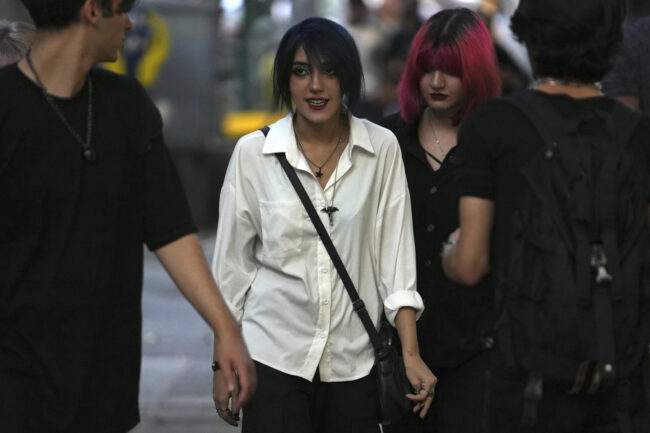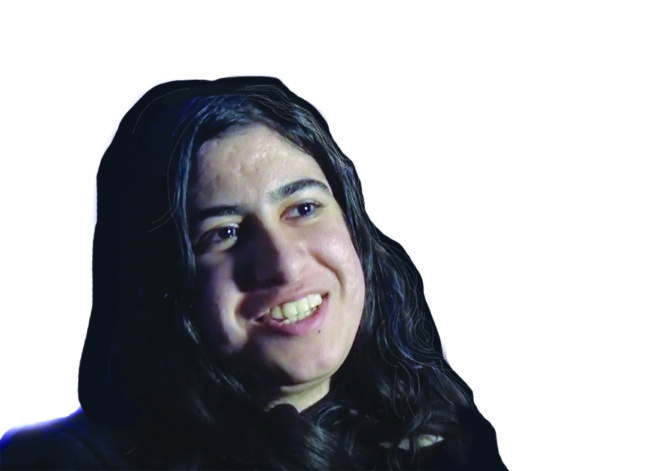Three months in America: Foreign student recounts life as a woman in Iran

Eating Braum’s sugary ice cream is common for many Oklahomans. But Braum’s is new to UCO student Saradokht Samea, as she has been enjoying new food and freedoms here.
“Braums is my favorite now,” Samea said laughing. “Their ice cream is so good!”
After moving from Iran in August, Samea’s delight in Braum’s reflects a different way of life that she has embraced here in America. A stark contrast to the vast cultural and social issues in her home country.
“Sometimes we take things for granted. In America, you can be how you want to be. You can follow your dreams,” Samea said. “In other countries, you don’t have that.”
Saradokht, who goes by Sara, is still adjusting to the challenges of college life in America. She is preparing for the final exams of the semester in just a few weeks, having arrived here only three months ago.
“As a woman, you have to follow very strict rules,” Samea said. “We don’t have much opportunity [in Iran].”

Women’s rights in Iran are influenced by interpretations of Islamic law and social norms. With a mix of democracy and theocracy, women and young girls experience many different regulations that women in the United States have not had to worry about for nearly a century.
Iran’s 1906 constitution promised “equal rights before the law”, but made no specific mention about women in regards to the law, according to the United States Institute of Peace. Fourteen years later, in 1920, the 19th amendment to the U.S. constitution was ratified, women’s right to vote. It was not too long ago that our grandparents and great-grandparents did not always have a right to vote in the U.S.
Family in Iran encourages Samea not to look back and to keep following her dreams, as they continue to support her on the journey for success as a nutrition major at UCO.
Gender inequality, child marriage and morality police are a few of the challenges that make living in Iran difficult for women.
Iranian women must obey the country’s dress code, covering their hair, neck, arms, chest and legs, for modesty and protection . In recent years, protests have led many women to disregard this dress code law altogether, risking their lives every time they go out in public.
Although women in Iran face these stern rules, Samea felt safe growing up in her country because of their deeply-ingrained cultural values and how the government strictly enforces the protection of women.
However, the government has also killed women in recent years for protesting and not following the country’s laws. Last month, security footage showed 17-year-old Armita Geravand entering a subway in Tehran with her hair out. Soon after, she slipped into a coma and was carried out of the subway after a reported assault from The Guidance Patrol, or better known as Iran’s morality police, what happened in the train was unclear. Geravand died weeks later. Another instance that ended with someone’s death took place in September 2022. Iranian hijab opposer Mahsa Amini died in Tehran following an alleged beating from the morality police. The Iranian police denied any involvement in relation to the girls’ deaths.
“When I was a child, it was better,” Samea said. “We had more freedom of choice, but since last year, everything is getting worse and worse.”
In both modern day Iran and the U.S. a century ago, women had limited opportunities to participate and enter politics. However, their limited legal rights go beyond just politics.
As for family law, the Civil Code requires that a man is granted his deceased wife’s entire estate, but a widow receives only one-eighth of her husband’s estate. Parliament voted to let women inherit land only 14 years ago, in 2009.
The country of Iran is approximately 636,000 square miles and contains many different environments, including: beaches, deserts, fertile plains and snow-capped mountains. Mount Damavand at 18,402 feet, is the tallest mountain in Iran and tallest volcano in Asia. Samea’s favorite spots in Iran are on the Persian Gulf, located South of the country. “My dad would rent a boat and fish and I would relax,” Samea said. “The water is so clean and beautiful, I miss it.”
As safety becomes an increasing concern for women who want to express themselves, Samea protested for her rights in Iran before arriving in America. Despite strict rules limiting women’s liberties, Samea is excited to go back to Iran one day when their government is doing better, so she can see her family and experience the many natural beauties of the country once again.

